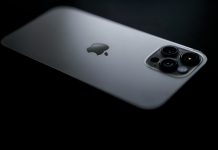Every year new gadgets hit the market promising better performance, sleeker designs, and smarter features. The question many of us ask is simple: should you really spend more on premium gadgets, or will budget options get the job done? Let’s dive into some real comparisons and explore whether those extra dollars are worth it.
What You Really Pay More For
When you go for a costlier gadget, you usually get:
- Better build materials and design that last longer
- More powerful processors and faster performance
- Extra features like advanced cameras, premium sensors, and smoother displays
- Longer software updates and customer support
- Higher resale value down the line
Still, premium doesn’t always equal better value. Sometimes you end up paying more for features you never really use.
Phones: iPhone 17 vs Budget Models
The iPhone 17 is Apple’s latest release, and it brings features that used to be reserved for Pro models right into the base version. Let’s compare it with Apple’s more budget-friendly options, like the iPhone SE or slightly older models.
| Feature | iPhone 17 (Base Model) | Budget / Older iPhone (SE, 14, or 15) | What You Gain with iPhone 17 |
|---|---|---|---|
| Display | 6.3-inch Super Retina XDR OLED, 120Hz ProMotion, always-on, peak brightness ~3,000 nits | Older models often limited to 60Hz, less brightness, no always-on | Smoother scrolling, brighter and easier to use outdoors, better for gaming and media |
| Storage | Starts at 256 GB | Often starts at 64–128 GB | More space for apps, photos, videos without worrying about running out |
| Camera | 48MP main, improved ultrawide, 18MP front with Center Stage | Lower MP and weaker low-light performance | Clearer photos and video, better selfies and video calls |
| Performance | A19 chip, optimized for AI and long-term updates | Older A15/A16 chips in cheaper models | Faster, more future-proof, smoother multitasking |
| Price | From ~US$799 | Budget models start from ~US$429–$599 | Worth it if you care about display, photos, and longevity |
Verdict: If you’re upgrading from iPhone 14 or earlier, the iPhone 17 feels like a real leap, especially with its display and camera improvements. But if you mainly use your phone for social media, messaging, and calls, the SE or a discounted older model may still be enough.
Smartwatches: Premium vs Mid-Range
Smartwatches are another category where price differences matter. Let’s compare a premium watch like the Apple Watch Series 9 or Samsung Galaxy Watch 6 with mid-range options like the Amazfit GTR 4.
| Feature | Premium Smartwatch | Mid-Range Smartwatch | What You Gain with Premium |
|---|---|---|---|
| Sensors | ECG, blood oxygen, advanced temperature tracking, fall detection, safety features | Heart rate, steps, basic sleep tracking | More accurate health monitoring and safety tools |
| Display | Brighter, always-on OLED with tough glass (sapphire on some models) | Standard AMOLED/LCD, not always-on, lower brightness | Easier to read outdoors, more durable |
| Integration | Deep integration with iOS/Android ecosystem, full app store, fitness coaching | Limited apps, mostly fitness-only focus | More functionality beyond fitness |
| Battery Life | Usually 1–2 days | Often 3–5 days | Premium sacrifices battery for advanced features |
| Price | ~US$400+ | ~US$150 | Better build and support, but at a higher cost |
Verdict: If you rely on health tracking or want your watch to be a true extension of your phone, premium is worth it. But if you just want to track steps, workouts, and get notifications, mid-range models save money while covering the basics.
Other Gadgets: Earbuds Example
- Premium earbuds like Apple AirPods Pro 2 or Sony WF-1000XM5 offer active noise cancellation, superior audio quality, and longer support.
- Budget earbuds can still deliver surprisingly good sound but often skip on features like adaptive ANC, wireless charging, or water resistance.
Here it really depends on whether you care about immersive audio and frequent travel (where ANC matters), or if you just need decent sound for workouts and commuting.
When Paying More Makes Sense
You should lean toward premium if:
- You need the device to last at least 3–5 years.
- Photography, video, or advanced health tracking is part of your lifestyle.
- You want better build quality and durability.
- Resale value matters.
- You rely heavily on your gadgets daily for productivity or creative work.
When Budget Gets the Job Done
Stick with budget if:
- Your needs are basic (calls, social media, music).
- You don’t care about fancy cameras or displays.
- You upgrade devices often anyway.
- Battery life matters more than features.
- You’re on a tighter budget but still want solid functionality.
Final Thoughts
So, are costlier gadgets worth it? The answer depends on you. If you want the latest iPhone 17 features like a silky smooth display, powerful cameras, and longer updates, paying more makes sense. If you just need a reliable phone for everyday use, a budget model will still serve you well. The same applies to smartwatches and other gadgets: premium gives you more, but only you can decide if those extras are truly valuable for your lifestyle.
Before you buy, ask yourself: Will I actually use the premium features? Or am I just chasing the newest shiny thing?














